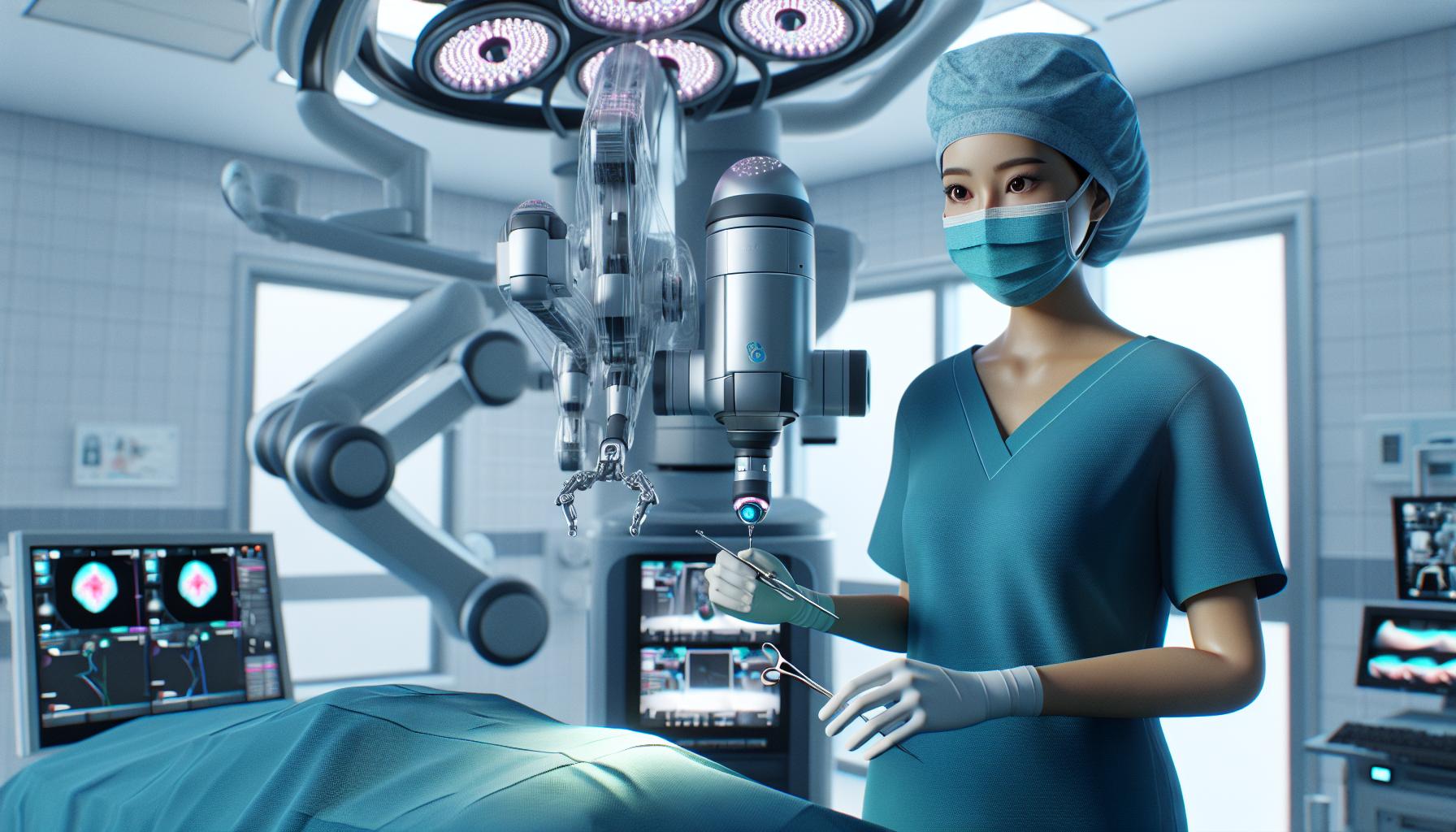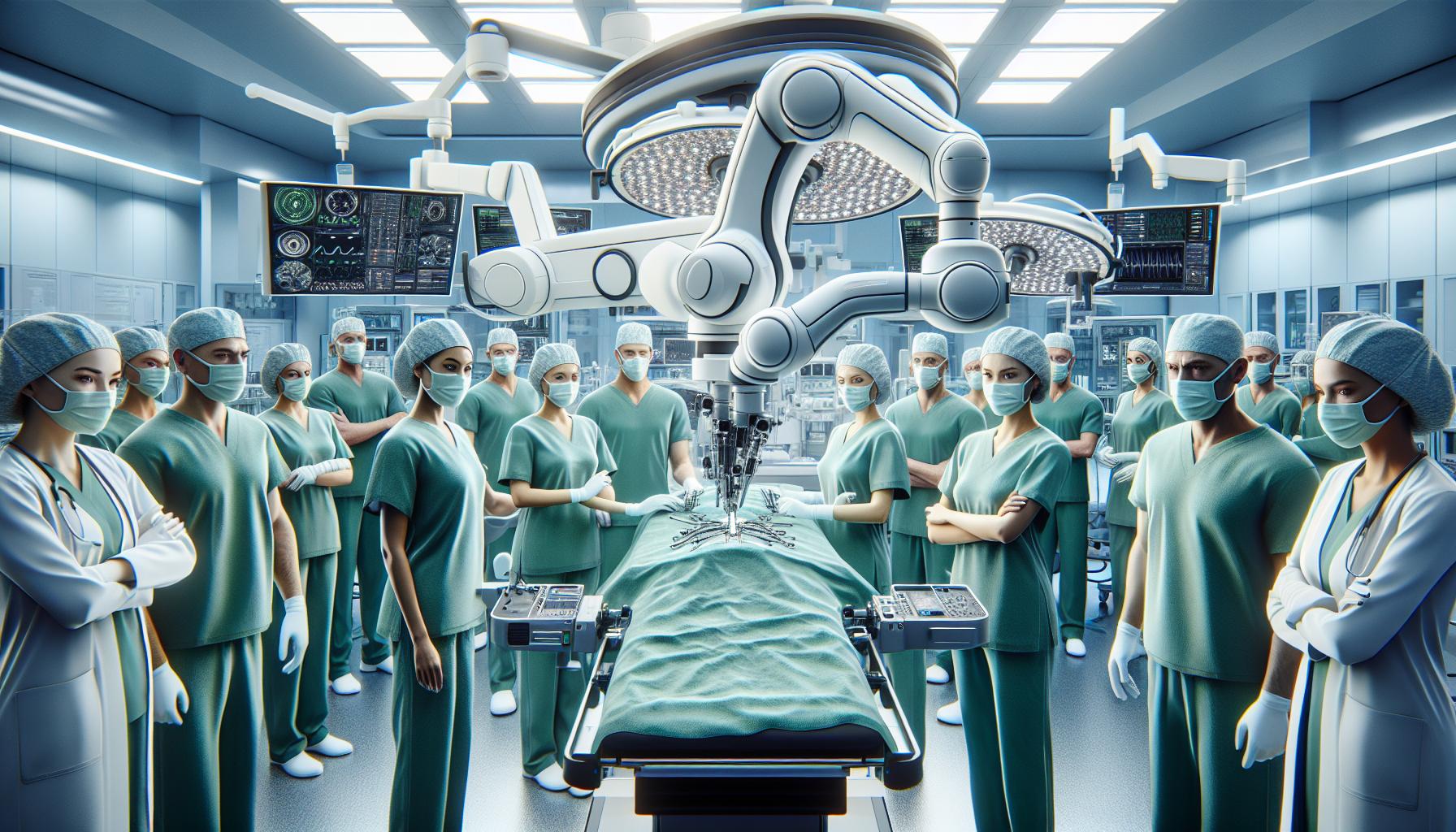In the ever-evolving landscape of healthcare, medical robotics companies are revolutionizing the way we approach patient care. These innovative firms are at the forefront of developing cutting-edge technologies that enhance surgical precision, streamline diagnostics, and improve patient outcomes. As someone who’s fascinated by the intersection of technology and medicine, I find it incredible how these companies are transforming traditional healthcare practices.
From robotic-assisted surgeries to automated diagnostic tools, the advancements made by medical robotics companies are nothing short of groundbreaking. They’re not just improving efficiency; they’re redefining what’s possible in medical treatment. With a focus on precision and minimal invasiveness, these technologies are paving the way for safer and more effective healthcare solutions. Whether you’re a healthcare professional, a tech enthusiast, or simply curious about the future of medicine, understanding the impact of these companies is essential in grasping the full potential of modern healthcare innovation.
Key Takeaways
- Cutting-edge medical robotics technologies are revolutionizing healthcare by enhancing surgical precision, streamlining diagnostics, and improving patient outcomes.
- Key industry players like Intuitive Surgical, Medtronic, and Stryker are leading innovation and collaboration efforts, driving growth in robotic-assisted surgical systems and other medical technologies.
- The medical robotics market is rapidly expanding, with projections to reach $20 billion by 2025, driven by technological advancements and the growing demand for precision medicine.
- Companies face challenges such as complex regulatory pathways, cybersecurity threats, high development costs, and ethical considerations, necessitating agile strategies and robust security measures.
- Future prospects in medical robotics focus on AI integration, miniaturization, telemedicine, and rehabilitation advancements, promising more efficient and personalized healthcare solutions.
- Collaborations between tech companies and healthcare institutions are essential for advancing innovation and developing comprehensive medical robotics solutions globally.
Medical Robotics Companies
Medical robotics companies revolutionize healthcare with cutting-edge technologies. This industry, valued at over $5 billion in 2022, is expected to grow annually by more than 15% (source: Fortune Business Insights). Critical components like robotic surgical systems, assistive robots, and telepresence robots redefine medical procedures. Examples include the Da Vinci Surgical System for precision surgeries and telemedicine robots like Xenex for remote patient interactions.
Key players focus on innovation and collaboration. Industry leaders like Intuitive Surgical, Stryker, and Medtronic consistently push boundaries, developing systems that enhance surgical precision and patient care. Partnerships between tech companies and healthcare providers drive progress, resulting in more accurate diagnostics and reduced recovery times.
Regulatory bodies shape this industry’s growth. Agencies like the FDA and EMA ensure safety and efficacy, instilling confidence in both medical professionals and patients. Standards committees work toward unified policies to foster global adoption and integration of robotic technologies in healthcare systems.
Key Players in Medical Robotics

Several companies stand out in the medical robotics field. Their innovations significantly shape medical practices and patient care.
Intuitive Surgical
Intuitive Surgical specializes in robotic-assisted surgical systems. Its Da Vinci Surgical System dominates the market by offering surgeons improved precision and control. Intuitive continually invests in R&D to maintain its lead in surgical robotics.
Medtronic
Medtronic, known for its wide range of medical devices, advances in robotic solutions for minimally invasive surgical procedures. The Hugo RAS (robot-assisted surgery) system exemplifies its commitment to integrating advanced technology in healthcare, improving patient outcomes.
Stryker
Stryker focuses on orthopedic and spine technologies through its Mako robotic-arm assisted surgery platform. This innovation offers enhanced surgical accuracy and efficiency. Stryker’s strategic acquisitions support its growth in medical robotics, solidifying its position as a leader.
Innovations and Technologies

Medical robotics companies continually push the boundaries of technology in healthcare, developing groundbreaking solutions that redefine medical practices. These innovations span various applications, from surgery to rehabilitation and beyond.
Surgical Robots
Surgical robots revolutionize surgeries by enhancing precision and control. The Da Vinci Surgical System exemplifies such advancements, providing surgeons with unparalleled dexterity and visualization during procedures. This technology minimizes incision size, leading to faster recovery times for patients. Intuitive Surgical leads this domain, focusing on integrating robotics with advanced imaging to improve surgical outcomes.
Rehabilitation Robots
Rehabilitation robots offer critical support in patient recovery, particularly after accidents or surgeries. These devices assist in physical therapy by providing consistent, repetitive movements, which are crucial in regaining strength and mobility. Cyberdyne’s HAL suit and ReWalk exoskeleton represent remarkable strides, enabling paralyzed patients to regain movement. Such technologies exemplify the synergy between robotics and therapy, facilitating patient independence.
Telepresence Robots
Telepresence robots bridge geographical barriers, allowing healthcare professionals to deliver care remotely. These robots, such as those developed by InTouch Health, enable doctors to interact with patients through real-time video and audio, improving access to care. They’re vital in rural or underserved areas, offering consultations and monitoring. This technology not only expands healthcare access but also optimizes resources by reducing travel needs for both doctors and patients.
Market Trends and Growth

The medical robotics industry experiences rapid expansion driven by technological advancements and increasing demand for precision medicine. Analysts project the market will reach $20 billion by 2025. Key growth factors include the rising prevalence of chronic diseases and a growing aging population that boosts demand for innovative robotic solutions in healthcare.
Investments in research and development fuel innovation and drive market competition. Companies prioritize collaboration with healthcare institutions to develop cutting-edge technologies, which enhances their market position. For instance, strategic partnerships between tech firms and hospitals expedite the integration of robotics into surgical procedures.
Regulatory frameworks evolve to accommodate technological advancements, ensuring safety and efficacy. Streamlined approval processes in regulatory bodies like the FDA facilitate faster market entry for new products, encouraging further growth. A supportive regulatory environment enables medical robotics companies to innovate while maintaining high standards of patient care.
Global adoption of medical robotics grows as healthcare systems recognize the benefits of robotic solutions. Markets in Europe and Asia demonstrate significant potential, with countries investing in healthcare infrastructure upgrades. This trend fosters the expansion of robotic applications across diverse medical specialties, from surgery to rehabilitation, setting the stage for a transformative impact on global healthcare delivery.
Challenges Facing Medical Robotics Companies
Medical robotics companies encounter several challenges that impact their operations and growth. Navigating complex regulatory pathways often proves challenging, as rigorous standards set by agencies like the FDA and EMA require significant time and resources to meet. Ensuring compliance, while vital for patient safety, can delay innovation and market entry.
Addressing cybersecurity threats is another critical concern. As medical robots increasingly integrate with digital systems, they become vulnerable to cyberattacks that could disrupt operations or compromise patient data. Implementing robust security measures, therefore, remains essential to protect sensitive information and maintain trust.
Managing high development costs poses financial hurdles. Creating advanced robotics technology involves substantial investment in research and development. Companies must strategically allocate resources to innovate while ensuring financial sustainability and competitive pricing.
Navigating ethical considerations presents further complexity. Issues surrounding patient data privacy and autonomous decision-making require careful consideration, as ethical guidelines evolve alongside technological advancements. Companies must engage with stakeholders to address these concerns responsibly.
Adapting to rapid technological changes is crucial. Staying ahead in a field defined by constant innovation demands agility and continuous learning. Companies need to invest in cutting-edge research, partner with tech leaders, and foster a culture of innovation to maintain a competitive edge.
Future Prospects and Developments
The future of medical robotics appears promising, with rapid advancements poised to redefine healthcare delivery. Artificial intelligence (AI) integration offers transformative potential, enhancing the capabilities of surgical and diagnostic robots. Companies are focusing on AI-driven data analysis to predict patient outcomes, improve decision-making, and personalize treatment plans. Surgical robots like those developed by Intuitive Surgical and Medtronic are increasingly incorporating AI to optimize performance during complex procedures.
Miniaturization of robotic systems is another significant development. Engineers aim to create smaller, more precise devices for tasks such as minimally invasive surgery and targeted drug delivery. This innovation would reduce recovery time and improve patient comfort, particularly for delicate procedures. Companies developing these compact technologies are likely to lead the next wave of breakthroughs in patient care.
Telemedicine and remote robotic surgery hold the potential to break down geographical barriers in healthcare. With advances in real-time data transmission and virtual reality interfaces, surgeons could perform operations across continents. This would bring specialized care to remote or underserved regions, significantly improving global health equity. Companies involved in telepresence robots, like InTouch Health, are paving the way for these capabilities.
In the realm of rehabilitation, robotics development focuses on enhancing mobility and independence for patients. Innovations such as exoskeleton suits and robotic prosthetics are under continuous refinement, aiming to offer more natural movement and integration with human users. Companies like Cyberdyne and ReWalk Robotics are at the forefront of making rehabilitation more effective and personalized.
Sustainability in manufacturing and operation of robotic systems also gains importance, as environmental concerns shape industry practices. Companies explore the use of eco-friendly materials and energy-efficient designs to reduce the carbon footprint of medical robotics. This aligns with global efforts to create sustainable healthcare solutions.
Collaborations between tech companies and medical institutions will likely intensify. These partnerships are crucial for accelerating innovation, driving research, and developing comprehensive solutions that address complex healthcare challenges. As these collaborations grow, they’ll likely facilitate the emergence of more integrated and adaptive robotic systems tailored to meet diverse medical needs.

